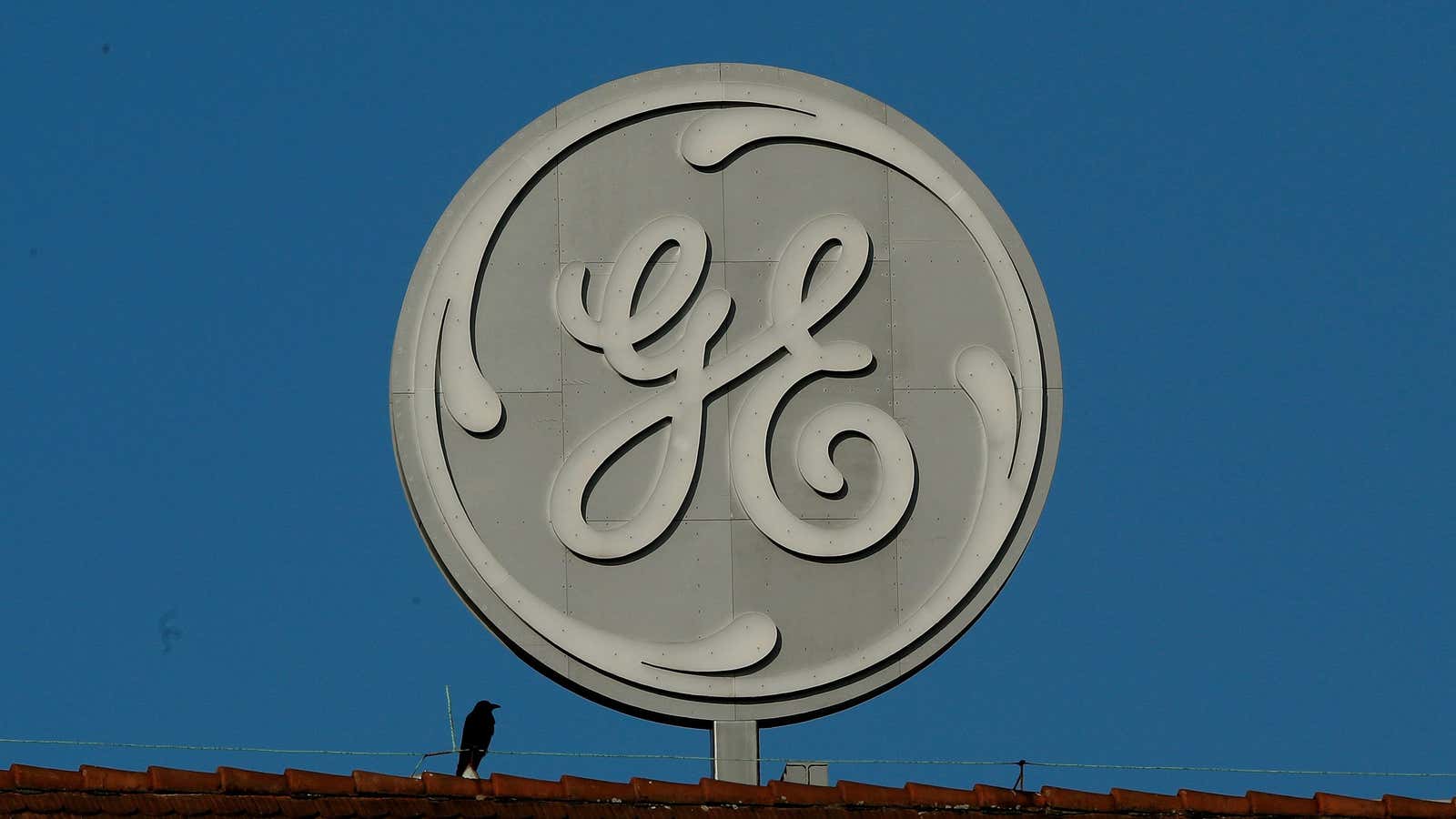When General Electric fired its CEO a month ago, investors cheered the move. They might not be so enthusiastic about it now.
GE’s new chief, Lawrence Culp, today (Oct. 30) announced the once-mighty conglomerate was cutting its dividend for the second time in a year, quarterly earnings that failed to meet analyst’s (modest) expectations, and news that American securities regulators were expanding their investigation into the company’s accounting practices. Shares are down some 8% at the time of writing, a daily decline worth more than $8 billion in market cap.
GE has paid an annual dividend since the 1930s, helping cement its reputation as one of the bluest of Blue Chip stocks. The dividend, which was cut from 24 cents to 12 cents a share in Sept. 2017, will now pay investors just a penny per share. The move will save the cash-starved company around $4 billion, but punishes the retail investors who depended on GE’s dividend for income.
According to Howard Silverblatt of Standard & Poor’s, GE is now responsible for three of the largest dividend cuts, in absolute terms, since the S&P started tracking them in 1955:
GE’s decline has been long and slow, until it became sudden and fast. Under celebrity CEO Jack Welch, the company was one of the most admired on Wall Street, and in 2001 it was the largest in the world by market cap (now, it’s 52nd). Much of that value was built not on the engineering products it was originally known for, but financial services. When the world’s credit markets collapsed in 2008, GE Capital was left badly exposed.
Welch’s successor, Jeff Immelt, presided over a clumsy, decade-long transition from a company dependent on finance to one that bet its future on green power. Investors eventually grew impatient with the stock’s long slide and forced him out last year. Immelt was replaced by John Flannery, who himself was fired Oct. 1.
Culp must be hoping GE is bottoming out in his first month on the job, and the only way to go is up. Investors don’t seem in the mood to give him much time to prove it.
